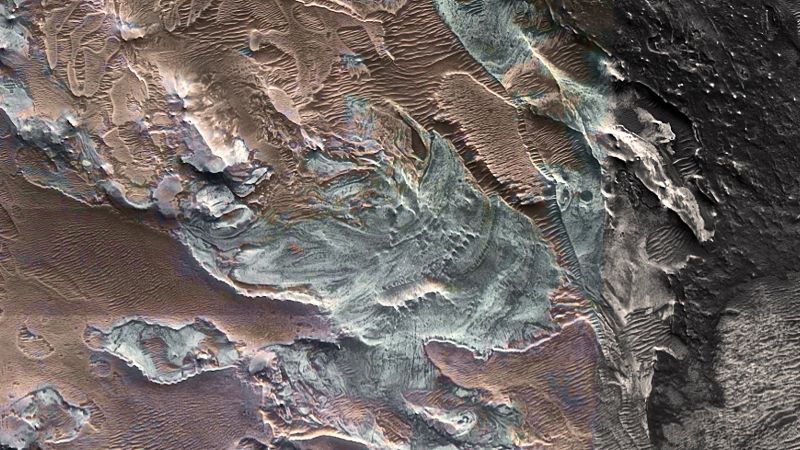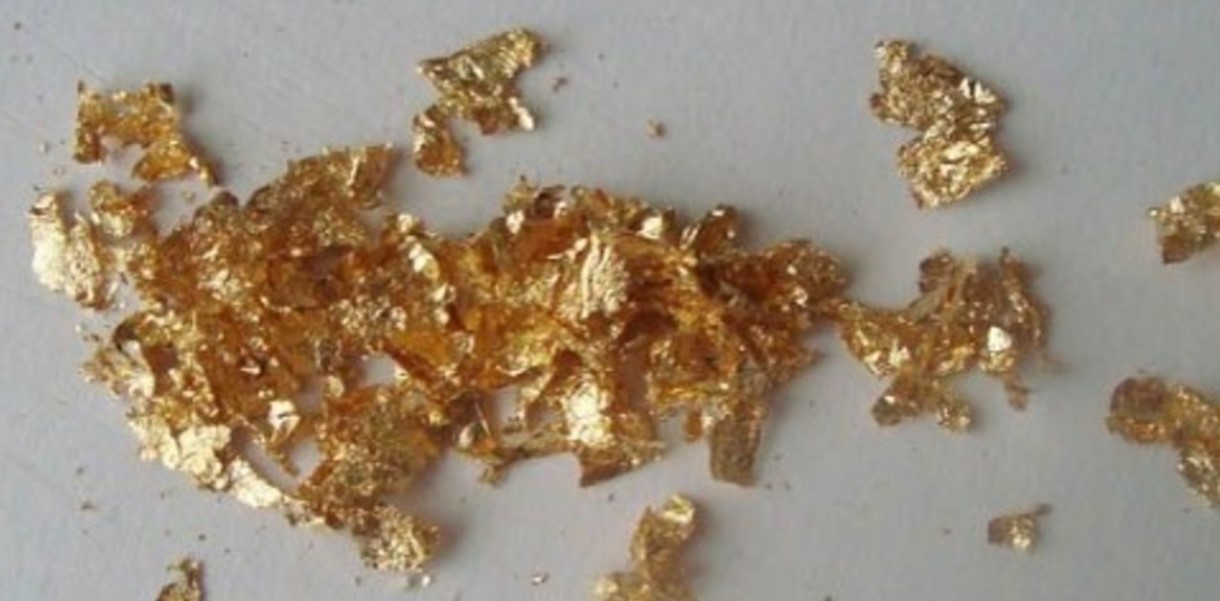(CNN) — Remains of ice have been found near the equator of Mars, suggesting that some form of water may still exist in a region of the Red Planet within reach of humans one day.
The snow mass is not there now, but Scientists Remains were found in other mineral deposits near the equatorial region of Mars. The deposits there mostly contain light-colored sulfate salts.
Salt deposits, shown in light blue, are preserved near the Martian equator where a glacier once existed.
When the scientists took a closer look, they recognized features of a glacier, including ridges called moraines—debris deposited or pushed up by a moving glacier. The research team also found fissure fields, or deep wedge-shaped openings, forming within the glaciers.
The findings were shared Wednesday at the 54th Lunar and Planetary Science Conference in The Woodlands, Texas.
“What we found was not ice, but a salt deposit with the detailed morphological characteristics of a glacier,” lead author of the study Dr. Pascal Lee, senior planetary scientist at the SETI Institute and the Mars Institute, said in a statement. .
This annotated image shows all the details of where the glacier once stood. (NASA MRO HiRISE/CRISM wrong color combination)
“What we think happened here is that salt formed on top of a glacier while retaining the shape of the ice below, down to details like crevasses and moraine bands.”
Researchers believe the glacier was 3.7 miles (6 kilometers) long, 2.5 miles (about 4 kilometers) wide, and 0.8 to 1.1 miles (1.3 to 1.7 km) high.
Volcanic activity is the key to glaciation
Scientists have an idea of how the glacier’s footprint formed based on evidence of volcanic material in the region. When a mixture of volcanic ash, lava, and volcanic glass known as pumice reacts with water, a hard, crusty layer of salt can form.
The map shows where glacial remains were found near the equator of Mars. (Pascal Lee)
“This region of Mars has a history of volcanic activity. If some of the volcanic material came into contact with glacial ice, chemical reactions would have occurred at the interface between the two to form a hard layer of sulfate salts,” said study co-author Saurabh Shubham, a PhD student in geology. at the University of Maryland, College Park, in a statement.
“This is the most likely explanation for the hydration and hydroxylated sulfates we observed in these light-rich deposits.”
Geologically young surface ice near the equator
The volcanic material eroded over time, revealing a layer of salt that captured the imprint of the glacial ice and its unique features, said study co-author John Shutt.
Mars has a thin atmosphere that allows space rocks to continue crashing into the planet’s surface. But the glacier’s finer, detailed features are still largely intact in the salt deposit, leading researchers to believe it is relatively “young.”
They believe that glaciation existed during the Amazonian geologic period on Mars, which began and continues 2.9 billion years ago.
Details of the glacier can be seen in this feature’s high-resolution image. (NASA MRO HiRISE/SETI Institute/Pascal Lee)
“We know of glacial activity in many places on Mars, even near the equator. We know of recent glacial activity on Mars, but so far, only at high latitudes,” Lee said. “A relatively young fossil glacier at this location suggests that Mars experienced surface ice even near the equator in recent times, which is new.”
Researchers don’t know if there is any ice under the reservoir.
“Water ice is not currently stable on the surface of Mars near the equator at these altitudes,” Lee said. “So it’s not surprising that we didn’t detect any water ice at the surface. It’s possible that all the water ice in the glacier has already sublimated. But it’s also possible that some of it is still preserved at shallow depths under sulfate salts.”
Shallow ice patches are possible
During the study, the team also observed ancient islands of ice, called salt flats, in the salt flats of the Bolivian Altiplano in South America. Sheets of salts have protected ancient glacial ice from melting or evaporating, a scenario researchers think may have occurred on Mars.
Next, the researchers want to determine if any ice remains from the glacier and, if so, how shallowly beneath the salt deposits. If this particular salt deposit is protecting the ice, there may be other ice nearby.
Orbiters orbiting the planet have shown ice deposits at the cold Martian poles, but if water is present in any form in the warmer equatorial low latitudes, it could have implications for our understanding of the Red Planet’s history and possible habitability and future exploration by humans. .
“The desire to get humans to a place where they can extract water ice from the ground has pushed mission planners to consider high-latitude sites,” Lee said. “But these latter environments are often colder and more challenging for humans and robots. If there are equatorial locations where shallow ice can be found, we’ll have the best of both worlds: warmer conditions for human exploration and access to more ice.”





